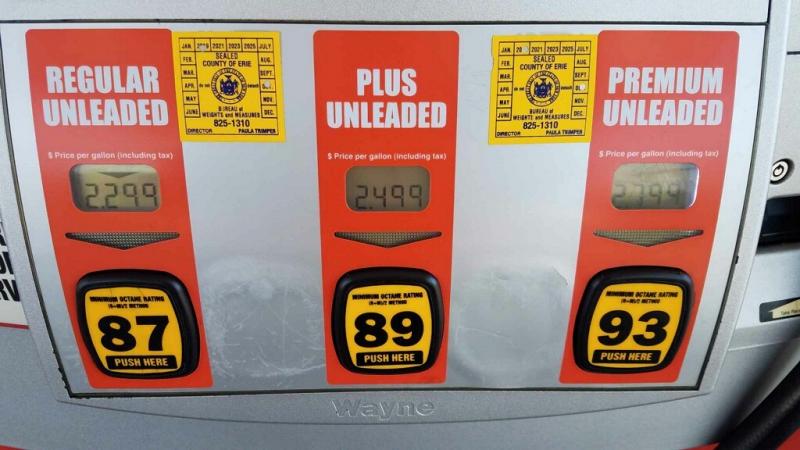
When buying gasoline...
Good measurement is also important when you buy gasoline and motor fuel. These fuels are sold by volume in gallons or liters. The price you pay for gasoline will depend upon:
- the octane level which may affect the performance of your car;
- the amount you buy; and
- any discounts offered.
A computer in the gasoline pump calculates what you owe based on the amount and the unit price of the gasoline. When comparing prices, be sure to compare gasoline with the same octane rating. Usually, the higher the octane rating, the higher the price. Also check to be sure you are comparing the same unit of measurement. Is the price per gallon or per liter? Compare the price of a gallon of gasoline at one station to the price of a gallon of the same octane at another station.
Many weights and measures officials routinely check gasoline pumps for accuracy. In many areas, they also check gasoline storage tanks to be sure that stations are selling the octane level advertised. If violations are found, the seller can be fined, and the product can be removed.
Gasoline stations may offer a discount if you pay with cash instead of using a credit card. This "cash discount" is usually 2 to 8 cents per gallon off the regular price. On some pumps, you may be able to push a button to automatically show the discounted price.
In some cases, the attendant must figure out the cash discount and deduct it from the price showing on the pump. To figure the cash discount in this situation:
- Multiply the number of gallons or liters you purchase by the credit price per gallon or liter. This should be the total price showing on the pump.
- Multiply the cash discount times the number of gallons or liters you purchase. This is your total cash discount.
- Subtract the total cash discount from the total price shown on the pump.
Here's an example (#1):
- You pump 10 gallons of gas into your car. The credit price is $1.799 per gallon. The Station offers a 5-cent discount per gallon if you pay with cash. How much should you pay if you use cash?
- Multiply the number of gallons times the credit price per gallon. (10 gallons x $1.799 = $17.99)
- Multiply the cash discount times the number of gallons. ($.05 X 10 gallons = 50 cents)
- Subtract the total cash discount from the total credit price. ($17.99 - 50 cents = $17.49)
- You should pay $17.49 for your gasoline.
Try other examples of pricing gasoline.
- #2. The credit price of the gasoline is $2.49⁹, you save $0.08 off when you pay by cash. You pump 28 gallons of gasoline into your vehicle. You pay with a credit card. What is the price of your gasoline?
- A. $69.72
- B. $69.97
- C. $67.73
- D. $59.33
- #3. The credit price of the gasoline is $2.19⁹, you save $0.06 off when you pay by cash. You pump 18 gallons of gasoline into your vehicle. You pay with cash. What is the price of your gasoline?
- A. $39.42
- B. $38.34
- C. $39.58
- D. $38.50
What You Can Do
- Be sure the attendant, or you, are using the correct pump. The octane rating and the price per gallon or liter should be clearly marked on each pump.
- Be sure the pump is set to zero before any gasoline is pumped.
- Check the price by multiplying the number of gallons or liters by the unit price. Be sure this shows as total due.
- Figure the cash discount, if any. Check that you are charged the right amount.
- If using a credit card, check your receipt to be sure the amount billed is the amount on the pump. Take your card and any carbon paper from the credit slip.
- If you have a problem or question that is not resolved with the gas station, contact your Weights and Measures office for advice.